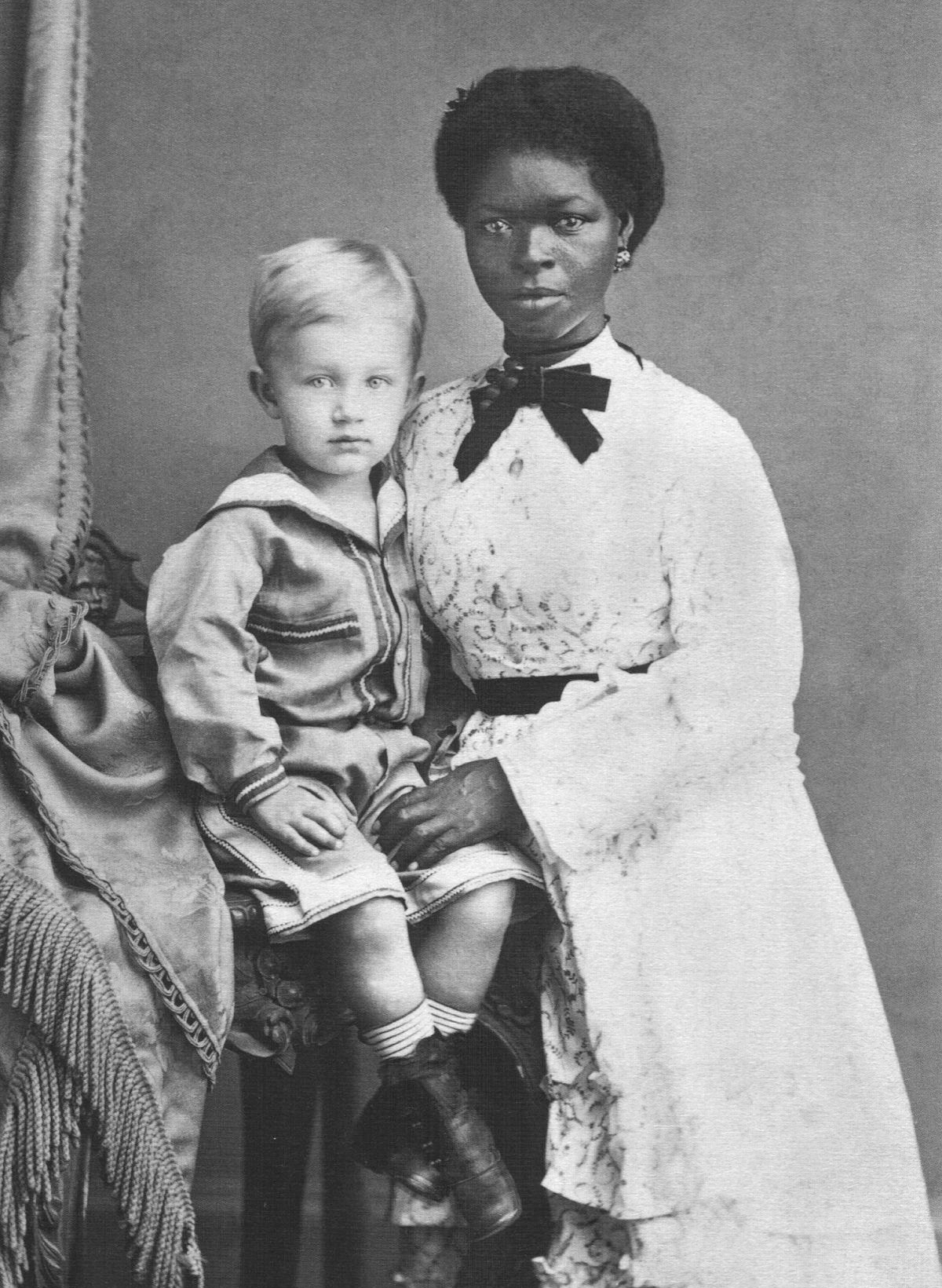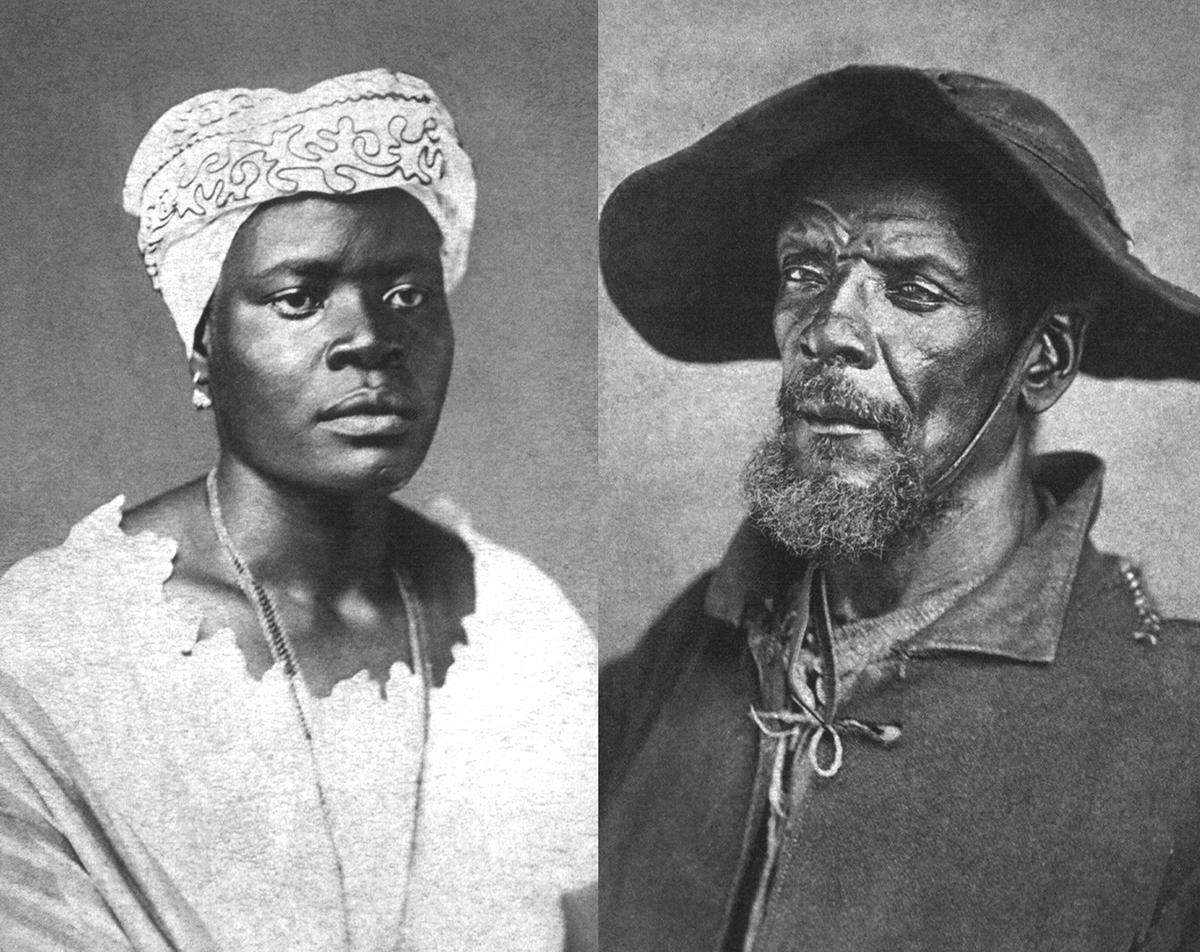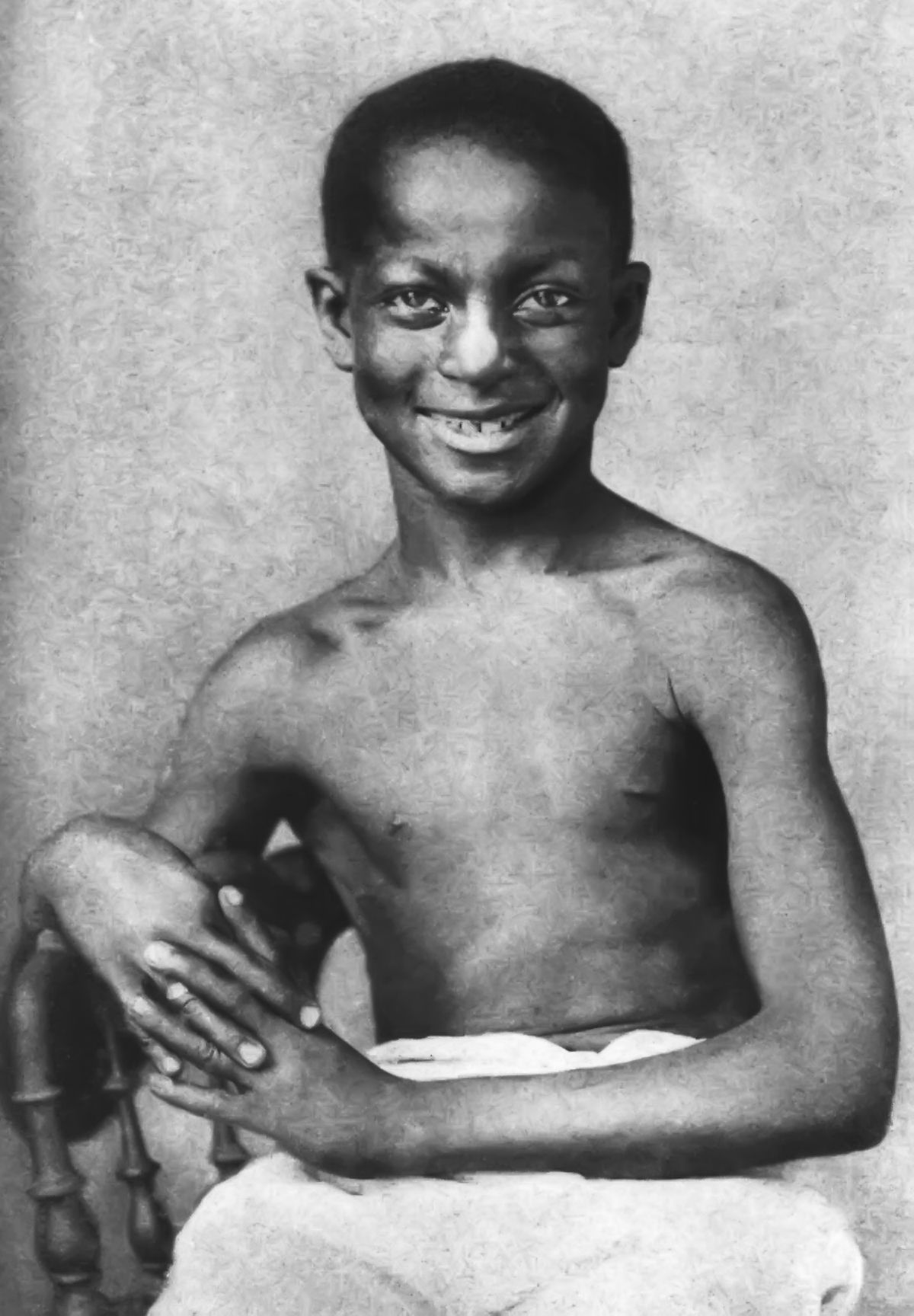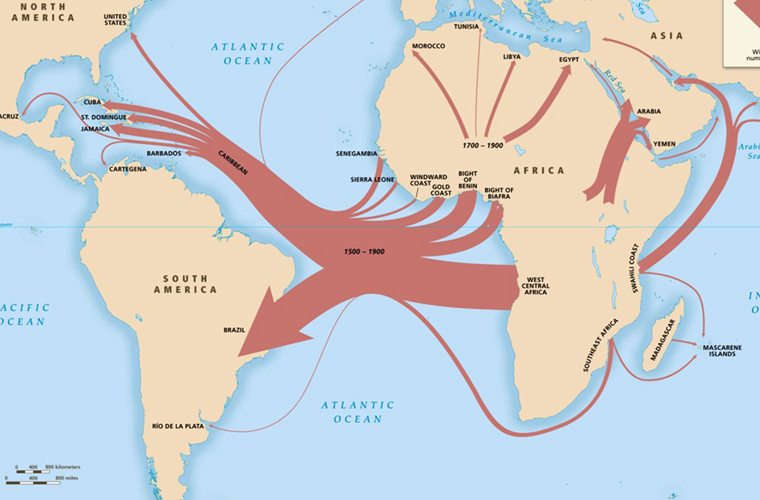The first Africans taken to the Americas went in small numbers, not directly from Africa, but via Spain and Portugal and the Atlantic sea islands. The development of Brazilian sugar plantations, however, created a growing demand for African slaves. Other Europeans settling their own colonies in the Caribbean and North America followed the Brazilian pattern and became slaveholders, creating profitable plantations that produced commodities for international markets.
At first, European planters used combinations of free, indentured, and enslaved labor. But for many crops—notably sugar, tobacco, and rice—they soon realized that African slave labor was most profitable and most easily and cheaply acquired. Today, the formula looks perplexing: people enslaved in Africa were shipped across the Atlantic to cultivate exotic commodities for Western consumption. In each case, what had once been a luxury quickly was re-imagined as a necessity. Thus, sugar, once the preserve of the rich and the privileged, became viewed as a necessity for ordinary people in all corners of the world. But all was made possible by the labor of enslaved Africans and their descendants.

Power and prosperity in the Atlantic flowed from colonial settlements, especially from slave colonies. Barbados, for example, (home to 50,000 enslaved people by 1700) proved the point. Bridgetown was, by then, the most prosperous town in British America. A century later, 118,000 Africans in Jamaica had made that island the jewel in the British Atlantic crown. A similar pattern emerged elsewhere. In the French islands of Guadeloupe, Martinique, but especially Saint-Domingue (Haiti after 1804), the number of Africans imported was astonishing—some 140,000 had been settled in the French islands by 1700, and another 450,000 enslaved Africans in other non-Spanish Caribbean islands. Half a million had been landed in Brazil. The numbers of Africans shipped to North America were smaller. By 1750 about 145,000 slaves were working in Virginia and Maryland, mainly in tobacco, and another 40,000 were transported to South Carolina for work in rice cultivation.
Only about 6 percent of all Africans shipped across the Atlantic were taken to North America. The largest numbers went to Brazil and to the Caribbean. North American enslaved populations, however, soon increased naturally, enabling North American slave owners to acquire slaves not from slave ships but from local plantations and slave traders. The newly founded United States was home to 700,000 enslaved people (one million lived and toiled in Brazil at the same time).
But wherever sugar dominated, enslaved populations tended to increase only from the importations of Africans. As planters converted more land to sugar cultivation, they sought more African laborers. Yet the higher proportion of Africans, the worse the levels of sickness and death (a clear link to the trauma of enslavement and the Middle Passage). In addition, work in the sugar fields, where men tended to outnumber women, was severely taxing and general health was worse than in other slave work.

One obvious result of slave labor was the transformation of Western tastes. What, for instance, could be more British than a sweet cup of tea (the tea, imported from China, sweetened with slave-grown sugar)? Tobacco quickly became the addictive habit of men everywhere, and, as snuff, it was consumed by fashionable women. Rice was used to starch clothing, indigo was a common dye, and rum became a hugely popular drink (and was the mainstay of the Royal Navy.) Coffee, cultivated on high-altitude slave plantations, became a popular drink in Europe and North America. Even the stylish furniture was fashioned from wood, especially mahogany, felled and cut by enslaved laborers in the Caribbean and Central America.
Though plantations had long existed in the Mediterranean and the Atlantic islands, they proved their worth in the Americas. In sugar, the plantation became a regimented and brutal system, though it was less punishing than other crops. In tobacco and rice, the work of enslaved people was done by the task. Whatever the work, the plantation enabled planters to make the best use of the slave labor, shifting slaves to whatever task suited their age and condition. For the enslaved, the plantation meant a lifetime’s labor. From the moment they arrived at, or were born on a plantation, to the moment they died, enslaved men, women, and children were allotted to appropriate work. Even the weaker ones—the young and the old—had work to do. Theirs was a life defined by labor.
Across the Americas, slavery required more than gangs of field laborers. It also needed skilled workers—masons, carpenters, distillers, cattlemen, drivers, nurses, and seamstresses. As the slave colonies developed into complex social and economic communities, slavery spilled out into most walks of life. Enslaved people were everywhere. They lived and worked in towns, they labored on the varied American frontiers (as cowboys, for example). Enslaved people worked on board the Atlantic ships, and they manned the small craft in inland waters and rivers. They toiled at the quayside, they drove the goods (and beasts) back and forth between rural properties and the nearest towns and ports. As towns developed, slave owners employed slaves—mainly women—in a host of domestic roles. Visitors were often surprised by the numbers and inescapability of slave domestics. The wealthy and fashionable even employed enslaved domestics in their townhouses and rural estates in Europe.
The greatest concentrations of Africans and their children were to be found at the heart of local economic life: in the fields. There, the pace and rhythms of slave labor varied enormously, depending on the crop involved. Slave work differed between sugar, tobacco, rice, and cotton. In sugar, slaves worked intensely, throughout the six-month crop cycle. Tobacco slaves worked at tasks (often alongside freemen) as did slaves in back-breaking rice cultivation. By 1860, cotton was the dominant form of slave labor in the United States, employing 2.5 million slaves, to produce 5 million bales of cotton each year. On the eve of the Civil War, there were 4 million enslaved people in the United States.

Slavery could be adapted to any number of tasks and locations and was easily shifted from one occupation to another. It was widely used in mining in South America, for example. It managed to reassert itself in new regions of cultivation, even when under political attack (notably by the British in the early nineteenth century). The Cuban sugar industry boomed in the nineteenth century, thanks largely to the decline of British and French sugar production. Despite the supposed efforts of the British and American navies to enforce the legal abolition of the transatlantic slave trade after 1807 and 1808, respectively, upward of 20,000 Africans were landed each year in Cuba. Cuban tobacco plantations also boomed in the same period. By the mid-nineteenth century, Cuba’s thriving economy was rooted in the revived slave system. All told, almost 750,000 million Africans had been shipped to the island.
Even that enormous figure pales when compared to Brazil. In the half-century to 1867, more than 1.5 million African slaves were landed there, shipped overwhelmingly in Brazilian and Portuguese ships. Slaves were used in a great variety of Brazilian industries that used slavery extensively: sugar, gold mining, and later, agriculture in Amazonia. By the time the British abolished their slave trade in 1807, almost 2 million Africans had been transported to Brazil. Rio de Janeiro became and remained the major slaving port in the Atlantic system (closely followed by Liverpool).
The vastness of Brazil afforded a host of economic prospects, many of which used enslaved labor. The country’s size also involved enormous internal journeys for the slaves. Those arriving from Africa (and almost a half million had undertaken the enormous sea voyage around the Cape from Mozambique) often faced huge onward journeys. Slaves were uprooted from their homes in Pernambuco, Bahia, and Amazonia and shifted onwards, by land and water, to the new booming economies of southern Brazil. Brazilian sugar boomed in the early nineteenth century, increasing six-fold in the thirty years to 1855. Coffee registered an even more staggering growth. The 125,000 tons exported in 1821–1825 had rocketed to 1.5 million tons from 1851 to 1855. That was made possible by two related factors: the huge numbers of imported African slaves and the explosive increase in coffee consumption, especially in the United States. By the mid-nineteenth century, Brazil’s slaves were producing half the world’s coffee. By 1900, Brazil produced five times as much coffee as the rest of the world put together.
The era of slavery in the Americas was also the era of rising prosperity in the West. But who made the connection between the mass consumption of these products and the labor of enslaved Africans scattered across the Americas? Did the citizens of the United States (themselves growing at a dramatic rate from mass immigration, primarily from Europe) even consider who cultivated their coffee or their sugar? And who, when buying cheap cotton goods even thought about the cotton slaves of the U.S. South? The truth was that slave labor and the products of slave labor had become an integral part of Western life. The benefits of slavery were at their most obvious in the profits and wealth of the great planters and merchants: in the fabulous mansions in New Orleans, Charleston, or Natchez, or in the eighteenth-century British stately homes. Yet the material benefits of Atlantic slavery went deeper than that, for they had established themselves as unchallenged features of Western life itself. It was to take a political upheaval in Western attitudes to bring down slavery.

